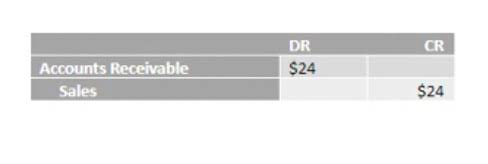
As we’ve shown throughout this article, the cash flow statement for a restaurant is a concise summation of the use of cash by your operation. It records whether your cash inflows are larger than your outflows (key for profitability) and shows you what funds are available for investment in the business, such as equipment purchases. Investments from partners and owners, as well as payments of dividends, constitute Financing Activities. This is where direct investments of cash into the business show up, as well as withdrawals/distributions to owners. When there is an increase in financing activity, there is also an increase in cash flow.
D&A, depreciation and amortization, are figures sometimes deducted from net income. As a restaurant owner who has multiple things to do, it can get difficult to keep track of all these metrics. It’s nearly impossible to manually collect and analyze this data on a regular basis. Thankfully, technologies like table management systems now exist to help restaurant owners do just that. If the cash payments are greater than the cash receipts, then there is a negative cash flow or a cash outflow, which means that your restaurant has spent more cash than it has earned.
Restaurant Balance Sheet:
A balance sheet helps restaurants get an understanding of a restaurant’s financial position at any given date. It takes into account the restaurant’s assets and liabilities and calculates the restaurant’s equity to know its net worth on that particular date. An essential tool for monitoring cash coming in and out of your business is a point-of-sale restaurant cash flow (POS) system. A modern restaurant POS allows you to easily pull reports on food costs, sales, vendor orders, and even labor costs. The foundation of restaurant cashflow analysis is accurate data on your cash inflows and outflows. For restaurants, that mostly means food and beverage sales (inflows) and wages and operating expenses (outflows).
Estimating The Fair Value Of BJ’s Restaurants, Inc. (NASDAQ:BJRI) – Simply Wall St
Estimating The Fair Value Of BJ’s Restaurants, Inc. (NASDAQ:BJRI).
Posted: Mon, 15 Apr 2024 07:00:00 GMT [source]
Managing total cash flow isn’t easy, but it pays to develop good habits that keep your restaurant in the green. It’s important to constantly be looking for ways to keep income high and expenses low. That means investing in good accounting and POS systems and hiring people who are as committed to maintaining a positive operational cash flow as you are. A quarterly budget will help you stay focused on your restaurant finances in shorter bursts.
Optimize Outgoing Payments
Each section is broken down into more parts depending on the restaurant’s operations. For instance, total sales would be broken down into food, liquor, events, etc. Make sure you have a strong flow of cash that gives your restaurant what it needs to survive and thrive. You also want to prepare for any differences in customer behavior, like national holidays or bad weather.

This opens up a plethora of data regarding spending habits, previous orders, etc. that helps restaurants make more informed and accurate predictions about future sales and cash flow. However, oftentimes restaurant owners and managers tend to overlook the most important side of running a business – the financials. To make sure your restaurant can succeed, here are ten cash flow management tips for improving restaurant cash flow and giving your business what it needs to survive and thrive. In your average restaurant, you’re most likely to see cash-out transactions for expenses like kitchen stoves and refrigerators in this section of the cash flow statement.
How to Start a Rotisserie Chicken Restaurant
Every manager has to handle their first cash flow statement at some point. This means learning terms, filling in the figures, and figuring out why it matters. But once that’s done, these statements can be really useful for assessing how well you’re doing, planning any investments, and mapping out the future of your restaurant. You can also get deeper financial insights from your POS by integrating your POS system with Eat App.
- Your cash flow statement is a regular measure, in conjunction with the income statement and balance sheet, of the evolving quality of your finances.
- It takes into account the restaurant’s assets and liabilities and calculates the restaurant’s equity to know its net worth on that particular date.
- At its most basic level, a P&L reflects costs that are subtracted from sales.
- It’s also nice to have a nest egg so you can rely on your savings instead of leaning on credit if there’s an unexpected expense.
Like inventory, not staying ahead of bookkeeping is one of the reasons restaurants fail. You need to keep up with it and double-check that invoices and bills are paid, the correct amounts are recorded, and that you are tracking all important restaurant accounting financials. Additionally, it’s best practice to stipulate how much will not be returned if you need to prepare for the event days in advance.
